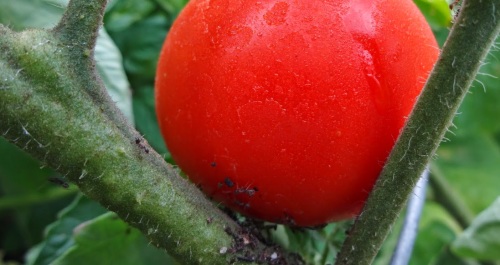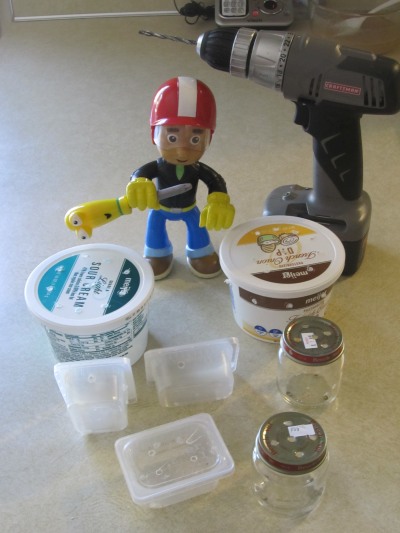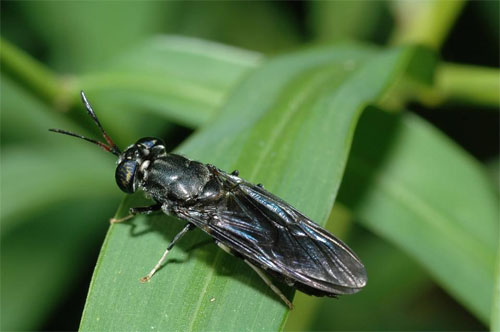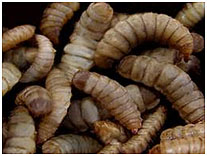
This great image from Baker Creek Rare Seeds gives you a quick idea about the day neutral Urizun Japanese Winged Beans, a popular summer veggie on the island of Okinawa. It is native to Asia, has a unique configuration yielding little star like crosscuts, the flowers are blue and purple, the little pods are tender fresh crunchy eating from the vine. The large pods are for harvesting green edible seeds. When the pods dry and turn dark, the seeds are saved to cook and/or grow more plants! Baker Creek always has free shipping and gives you a free seed packet with every order!!! You can donate if you care to.

April 2021 My first Urizun Japanese Winged Bean was given to me by an adventurous fellow gardener! This little tyke was 2 days old. Long story. For several months it went back and forth between living and dying, growing slower and slowly, finally making about 6″ tall. My friend gave up way sooner, composted hers, disappointed. Mine grew to about a foot tall and made a few small pods. I had planted it in a shady area. Well. We found out it is a tropical full sun humid heat lover. It was a heroic little plant trying to do what I asked it to. However. I have found that ‘Because the early growth of winged bean is slow, it is important to maintain weeds.’ Well Hallelujah! I am slightly vindicated after all! Apparently, they, and some other legumes, are naturally slow in the beginning!
2022 But I was hooked. Me, curious and determined, got some seeds from Baker Creek and tried again. I didn’t know it at the time, but much to their favor, the Urizuns are a Day Neutral variety. More below. I planted in April again, but in a sunny spot sheltered between Long Red Beans tall on the side the cooling wind comes from and Cucumbers low to the ground on the sunrise side. I hoped to keep them warmer and for a little humidity. I gave them a 6′ tall cage and told them my expectations.
Planting! I gave them (four!) super soil – they like well draining rich sandy loam. Their required soil pH ranges from 4.3 to 7.5. Since a tropical water lover, I built a big basin. They need to have a good amount of moisture in the soil to produce pods. Baker Creek says Sow 1-2 inches deep, in full sun, directly in garden well after last frost. Sow 6-12 inches apart in beds. Pre-soaking for 1-2 or 24-48 hours speeds germination – some say overnight. Pick out the ones that swell. Some will double in size! They germinate best between 77 and 85°, soil temp 65°. If you are starting them indoors, a heating pad helps. The plant likes 64-86° F. Lower than that they stop producing. They are not drought or frost tolerant.

They must have appreciated my efforts, because they thrived, slowly at first, but in no time, compared to 2021, they were quite taller and super healthy! Huge difference! Pods arrived in August.

Winged Beans have many names and are grown in many places. The winged bean (Psophocarpus tetragonolobus), also known as the Goa bean, asparagus pea, four-angled bean, four-cornered bean, Manila bean, Mauritius bean, winged pea, cigarillas, princess bean, in Vietnam dragon bean, is a tropical legume plant native to southern Asia—Papua New Guinea, Mauritius, Madagascar, and India. It grows abundantly in hot, humid equatorial countries, from the Philippines and Indonesia to India, Burma, Thailand and Sri Lanka. They are now grown in the US – mainly in Florida, Africa, Australia and Hawaii! Success in more locations is coming due to the further development of Day Neutral varieties.
It’s a Super plant for three reasons!
- Wiki says: Winged bean is nutrient-rich and all parts of the plant are edible. The leaves can be eaten like spinach, flowers can be used in salads, tubers can be eaten raw or cooked, and seeds can be used in similar ways as the soybean. The winged bean is an underutilized species but has the potential to become a major multi-use food crop in the tropics of Asia, Africa, and Latin America. The winged beans are high in Protein 12%, Potassium 16% and Iron 11%. Compared with a variety of legumes, these beans contain the highest proportion of calcium which make bones strong and prevents breakage. Fresh beans contain 31% of daily vitamin-C. 100 g of fresh leaves provide 45 mg of vitamin-C (75% of recommended daily value) and 8090 IU of vitamin-A (270 % of RDA)! The bean seeds are similar to soybeans in both use and nutritional content (being 29.8% to 39% protein). For some fascinating detailed research based info see ScienceDirect.
.
Per Elen Khachatrain raw winged beans: have a high level of Vitamin B1, which allows the body to use carbohydrates for energy. Winged beans have incredibly high amounts of potassium and copper. These beans contain more potassium than 90% of foods. The glycemic index of winged beans is low. The pH value of winged beans, in general, has been calculated to be equal to -6, which makes these beans an alkaline food. They are very high in net carbs, so check your diet to see if they are allowed. Thanks to Elen for her super post! - Winged beans are a perennial, but can be, and usually are, grown as an annual! In areas and times of extended drought, perennials use less water in general and don’t have to be replanted each year, using more water to establish them. But winged bean are not considered drought tolerant! Perennials can produce 10 months of the year, a much longer production period than most veggies, produce more veggies, and you don’t have to wait for another crop to grow. They produce right up to first frosts! If you have space and decide to let them die back in fall/winter, they will come back in spring!
- The plants are legumes! That means two good things! Like other legumes they can feed themselves by fixing their own Nitrogen from the air and depositing it in nodules on their roots. 1) When the plant dies it releases the Nitrogen into the soil. 2) They use less fertilizer while they are alive. The only necessity is to be sure to use an inoculant when you plant your seeds, the right inoculant, a Rhizobium. If you don’t use it, no nodules are formed. You can get it at any nursery.
.
This also makes Winged Beans an effective soil restorative cover crop – and you get beans! Plants for a Future states: A very good green manure with exceptional nitrogen-fixing properties, producing a greater weight of nodules per plant than any other member of the Leguminosae! William Woys Weaver says their nitrogen-fixing ability helped secure their role as a cover crop on banana plantations, both to enrich the soil and to provide an alternative source of income when bananas are not producing!

The large flower is white, pink, or light blue. My beautiful Urizuns are lavender with a touch of yellow!
Varieties depending on genotype!
My experience is as the images, with green rectangular Winged Beans, but they can also appear flat. Per World Wide Vegetables: Pod color can vary from shades of cream, green, pink, red or purple! Stem color is commonly green, but can vary from shades of green to shades of purple. Leaves vary a lot in shape and are different shades of green. The surface of the pod can be smooth or rough. When the pod is fully ripe, it turns an ash-brown color and splits open to release the seeds. Seed shape is often round, but oval and rectangular seeds are also found. Seed color changes based on environmental factors and storage conditions. Seeds may appear white, cream, brown or dark tan in appearance.
William Woys Weaver tells us: Due to the Bean’s adaptability, today there are hundreds of varieties, many developed in China. Of the varieties developed by Chinese gardeners, the ‘Hunan’ winged bean is credited for making cultivation possible in North America. Most winged beans grown in the United States are raised in south Florida and planted for winter cropping, because the plants do not flower unless the day length is short. ‘Hunan,’ however, can be grown anywhere with at least two months of warm nighttime temperatures (70 degrees or more). It will begin to flower in the latter part of the summer and then crop heavily in September until frost.
Evergreen Seeds says ‘Gardeners in most parts of the United States may see lots of vegetative growth throughout the summer, but no seed pods until late summer or fall.’
Per Echonet: Most varieties of this jungle plant from Borneo only bloom and set fruit when the days become very short, so they are planted in early fall. The variety ‘chimbu’ produces longer pods than most and is a striking deep red color. For pods in a summer garden in Florida or “up north,” be sure to purchase a “day neutral” or “long day” variety. See more about Day Length/Photoperiodism
![]() Companions They don’t mind growing near corn or tomatoes. Perhaps like Peas, another legume, the Onion family stunt the bean’s growth. Carrots are a great plant that enhance peas! Maybe try them at the base of the Winged Beans… But the plants often grow so full, there would be no space to stand to harvest them along a row. Some plant WBs on both sides of heavy gauge cattle panels! The beans do well inter-cropped with banana, sugar cane, taro, coconut, banana, oil palm, rubber, and cacao.
Companions They don’t mind growing near corn or tomatoes. Perhaps like Peas, another legume, the Onion family stunt the bean’s growth. Carrots are a great plant that enhance peas! Maybe try them at the base of the Winged Beans… But the plants often grow so full, there would be no space to stand to harvest them along a row. Some plant WBs on both sides of heavy gauge cattle panels! The beans do well inter-cropped with banana, sugar cane, taro, coconut, banana, oil palm, rubber, and cacao.
Planting Winged Beans are a tropical plant, will only flower when the day length is less than 12 hours, though there are varieties, like Hunan and Urizun, that are day-length neutral. If your area has day lengths over 12 hours, do your planting timing accordingly. REPEAT: The only necessity is to be sure to use an INOCULANT when you plant your seeds, the right inoculant, Rhizobium leguminosarum. Unless your soil already has the Rhizobium, if you don’t use it, no Nitrogen nodules, that feed your plant, are formed on the roots. They suffer.
Actually, the bacteria ‘infect’ your plants and cause them to make the nodules. If there is none in the soil, seeds may even be unable to germinate. Even if you presprout to start your seedlings, they will live, but not have the ability to fix the N they need, are feeble, struggle and produce little. Even if you fertilize it is not the same.
Inoculant, living Rhizobium leguminosera, has a short life. Last year’s left over is likely not viable. Get fresh, LOL! You can get it at any nursery. It’s inexpensive. It’s important to know that in addition to the Rhizobium, available nutrients and soil pH matter as well.

Give them a place to live, plenty of space! All varieties of winged bean are vines and need support. Without it they grow into heaps of tangled intertwined stems that produce few pods or seeds. That, however, is good if you are growing for tubers! Trellised plants produce twice the seed of unstaked plants. 10-13′ Vines will grow right over a shed if you let them! Growing vertically saves space to grow other plants.
My four beans preferred the morning side of the cage and by August they were near the top! They did make it to the top! Due to a coolish summer, they didn’t make that 10′. At the upper right you can glimpse that the four Long Red Beans also made it to the top and did their job sheltering the Winged Beans from cooling winds.
Maintenance Weed carefully while they are young.
Super tip from William Woys Weaver! Several growers have told me they prune the vines after about the 12th leaf appears. This causes the vines to send out as many as six side shoots, much like a grapevine, so you get a huge increase in pod production. A large pod harvest is most important for those of us who do not live in tropical climates, because frost is likely to ruin any chance of enjoying the tubers. – If you do this and you have a good hot climate, allow plenty of room because they can get really big and bushy! However, see the 4th image above! Varieties must vary, because my Urizun immediately put out plenty of side shoots on its own!
Otherwise, they are not drought tolerant! Maintenance is pretty much giving generous amounts of water for both the Long Red Beans and the Wings. The raccoons loved all that moisture and the worms that went with it, so there were diggings by them and recovering the roots by me. Thank goodness the Wings and Reds have strong long deep roots. Yellow or brown droopy leaves on the winged bean vine are a sign of overwatering, while dry brown crunchy leaves are a sign of underwatering.
Pests-Disease The Long Reds attracted ants/aphids and a few got on the Wings but didn’t stay long. I think they don’t like the Wings. I sprayed them off and the Reds did better this year too. There were NO diseases on the Wings, but there were on the Reds when they were near finishing. Winged Beans are noted for disease resistance. However, Texas Real Food farmers report leaf spot and powdery mildew. They recommend to treat powdery mildew, use copper fungicide or sulfur plant fungicide. For leaf spot, use sulfur sprays or copper-based fungicides to prevent the spores from germinating. In Florida Nematodes can be a problem and in some areas, mites.

Ladies and Gentlemen! August brought Baby Urizuns and delicious eating size ones. I harvested up to 6″ long ones that were tender. Help the baby beans by pulling the dead flowers off the tip of the bean.
Harvests, plural! The beans themselves can break just before the point where they are attached to the plant. Generally mine just popped off when I pulled them, but you will learn from your own plant what works best. There are still two last harvests! At the end of the season, flower production stops, seeds are saved, dig up your plant to see if there are any tubers! Note that some varieties of winged bean do not produce tubers. If your variety does make tubers and you want them more than the pods, remove the flowers!
Storage is simple. Fresh is best. On the counter they go limp quickly. In the fridge is better. Better to eat them right away or the little wings start turning black along the edge. They have a short shelf life, and fresh winged beans are very delicate, difficult to ship. Probably why they aren’t a commercial success. Freeze them if you need to store them longer.

October giants, 7-8″ long are hard as can be, no flex whatsoever, definitely not edible! They are doing a perfect job protecting ripening seeds inside. I cut one open, not an easy task, and the tender seeds are a good 1/4″ diameter, still green. They still have to form a protective covering and dry. November we had some early morning frosts and by the end of November pod production stopped.
SeedSaving If your growing season is short, you may get plenty of pods for eating, but not many seeds.
Other timing can be a bit tricky too! When I thought I better leave a few pods to dry for seeds I stopped watering. I’m guessing these pups have long strong roots partly because even the raccoons couldn’t dig them up, but also because they kept right on producing when I stopped watering them. Then it rained. Twice. A few weeks apart. They are still as green as can be though there are fewer new ones. The plant stops making pods when there isn’t enough moisture. We want them to dry and darken. Still having to wait and it is the end of November now. They are a Perennial and with those long strong roots somewhat drought tolerant and they are proving it, LOL! And, rain is predicted again in a couple days…
Instead, do this! In short season areas, 1) immediately leave some pods on the vine and let to dry and turn dark colored or 2) start some plants separately for seed saving and let them run to seed right away. When the pods turn black and dry out, they’re ready to pick. Store your seeds in an airtight jar in a cool dark place. Harvesting is super easy. Split the pod open and remove the seeds!

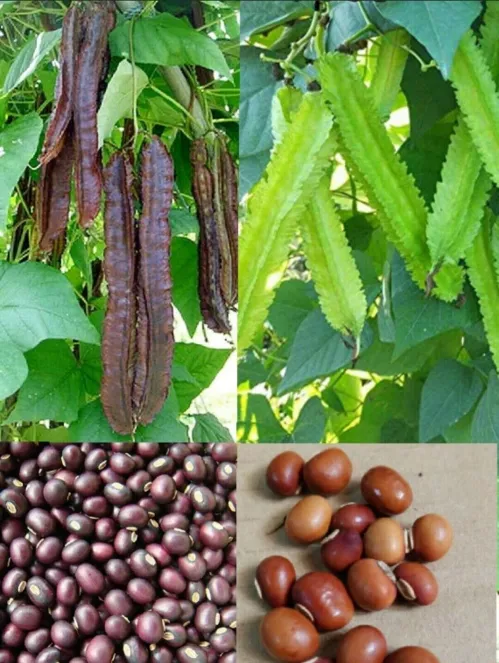
Winged bean is a self-pollinating plant but mutations and occasional outcrossing may produce variations in the species. Nothing is ever 100% predictable, thank goodness!
Medicinal Benefits too! Winged Beans are loaded with healthfulness! Health Benefits Times says: Helps Prevent Premature Aging, Reduces Headaches and Migraines, Ensures a Healthy Pregnancy, Inflammation and Sprains, Helps Prevent Vision Problems, Weight loss, Weakness, Can Help Prevent Diabetes, Prevents Asthma, Increases Immunity and Fights Colds. Practical Health and Wellness Solutions cites 18 benefits, including some of the above, and more! They are a terrific bean, and not just for eating. Check the net!
Nutrition and You cautions:
Winged beans and plant parts can be safely consumed by all healthy persons without any reservations. However, individuals with known immune-allergy to legumes and in G6PD-enzyme deficiency disease should avoid them.
Winged beans carry oxalic acid, a naturally occurring substance found in some vegetables which may crystallize as oxalate stones in the urinary tract in some people. Therefore, individuals with known oxalate urinary tract stones are advised to avoid eating vegetables that belong to Brassica and Fabaceae family. Adequate intake of water is therefore advised to maintain normal urine output in these individuals to minimize the stone risk.
Also, mature seeds must be cooked for 2-3 hours to destroy the trypsin inhibitor and hemagglutinins that inhibit digestion.
Culinary Treats! WBs are often referred to as a ‘supermarket on a stalk!’
- The beans are one of the commonly featured ingredients in Indonesian, Malaysia, Vietnam, and Cambodian cooking.
- I eat the beans raw off the vine! For longer keeping and tasty eating, pickle them!
- Finely chopped beans added in salads, stir-fries, and sambal.
- Whole immature pods may be grilled and seasoned with oil, salt, and pepper, served with a dipping sauce. In Sri Lanka winged bean recipes include various fried and curry dishes. I personally enjoyed pods cut on the diagonal in my omelets!
- The tender leafy greens and shoots cooked in stews and stir-fries.
- Flowers are lovely scattered over salad. The flowers of the winged bean are used to color rice and pastry.
- Fresh green winged beans seeds can be eaten like fresh peas! They can be roasted or added to stews. Sautéed or steamed, they can be served as a side dish with fish, seafood, and poultry. Generally, they are used in the same manner as peas.
- Dried and roasted, seeds can be ground into flour, make high protein bread. When brewed, it can be used to make a drink similar to coffee.
- Winged beans can also be made into milk, similar to soy milk.
- In Indonesia they make a popular Tempeh from the dried beans. Legumes can also be turned into curd by sprouting it, similar to tofu. Miso.
- Oil! Like soy beans, the seeds produce oil, used for cooking, illumination and soap. Expressed oil cakes are fed to livestock.
- Roots of winged beans can be eaten like potatoes.
- Tubers are eaten raw or cooked, have a nutty flavor due to their high protein content. Boil, steam, bake or fry them thoroughly. Evergreen Seeds says: They are significantly higher protein than potatoes or yams. Certain varieties of winged bean plants produce larger and better-tasting tubers, usually at the expense of seed pod production. Not all varieties produce tubers… Depending on varieties, tubers are harvested at 5 to 12 months.
- In addition, winged beans are used as animal feed for cattle, poultry, fish, and other livestock.
What a versatile plant! Though it is slow to start, it is worth waiting for! It is super nutritious, a somewhat drought tolerant perennial legume, a soil restorative! From a permaculture standpoint it IS a super plant! From an artistic point of view, it is pretty crazy and wild! Just plain fun ~ The freshest place to buy it and try it is likely your local Asian market, the farmers market or if you are lucky a friend will gift you! You don’t really have to have an adventurous palate or a strong gut because it is neither oddly flavored nor spicy hot! It has a subtle flavor like asparagus or peas! It’s distinctive shape is most certainly a conversation starter! Please enjoy this Baker Creek mini Vid!
See about more valuable Perennials
Highland tribesmen in Papua New Guinea esteem it so highly that they hold winged bean sing-sings (feasts) at harvest time. I hope your plantings bring you such happiness!
Bon Appétit, Dear Gardeners!
Updated 3.3.23
Love your Mother! Plant bird & bee food! Think grey water! Grow organic! Bless you for being such a wonderful Earth Steward!
The Green Bean Connection started as correspondence for the Santa Barbara CA USA Pilgrim Terrace Community Garden. Both remaining Santa Barbara City’s community gardens are very coastal. During late spring/summer we are often in a fog belt/marine layer most years, locally referred to as the May grays, June glooms and August fogusts. Keep that in mind compared to the microclimate niche where your veggie garden is. Bless you for being such a wonderful Earth Steward!

